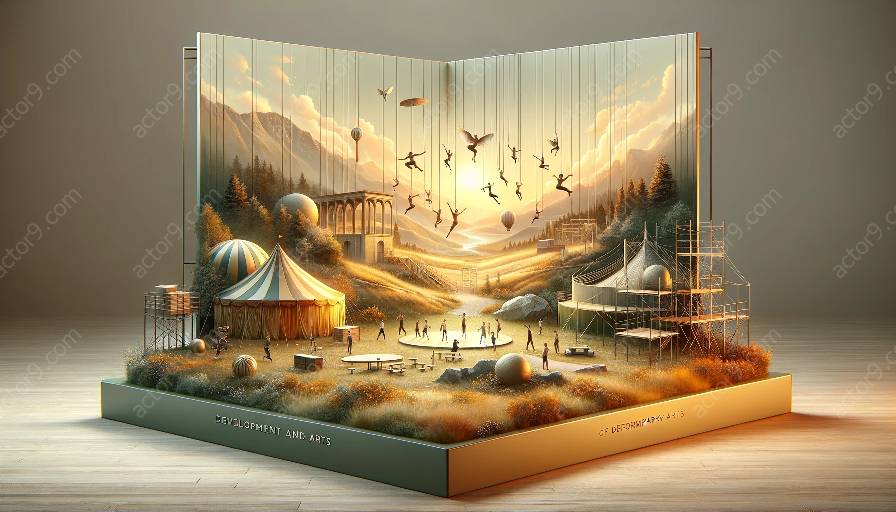Collaboration is key to the development and training in circus arts, as it offers opportunities to integrate circus arts with other art forms, creating rich interdisciplinary experiences. By leveraging the unique characteristics and skills of circus arts, artists can engage in diverse collaborations that enhance their creativity, expressiveness, and technical prowess.
Exploring Circus Arts in Interdisciplinary Collaborations
When exploring the intersection of circus arts and other art forms, it's essential to consider the potential for interdisciplinary collaborations. Circus arts encompass a range of disciplines, including acrobatics, aerial performances, clowning, and object manipulation, which can be seamlessly intertwined with various artistic disciplines such as dance, theater, music, and visual arts.
Utilizing Circus Arts in Dance Collaborations: Dance and circus arts share common elements of movement, rhythm, and physicality. Integrating circus arts into dance productions can introduce dynamic aerial choreography, acrobatic sequences, and innovative movement vocabulary, creating visually stunning and emotionally resonant performances.
Enriching Theater Productions with Circus Arts: The dramatic and theatrical nature of circus arts can add an extra layer of excitement and spectacle to theatrical productions. Incorporating aerial acts, physical comedy, and circus skills can elevate storytelling and character development, providing audiences with immersive and captivating experiences.
Collaborative Innovations in Music and Circus Arts: The rhythmic and dramatic potential of circus arts can be integrated with musical compositions and performances. Live music accompaniment to circus acts or the incorporation of circus elements in musical productions can create synergistic performances that engage both auditory and visual senses.
Training and Development in Circus Arts through Interdisciplinary Collaborations
Integrating circus arts into interdisciplinary collaborations also plays a crucial role in the training and development of artists in circus arts. By engaging in collaborative projects with other art forms, circus artists can expand their skill sets, deepen their understanding of performance dynamics, and broaden their artistic horizons.
Multidisciplinary Skill Expansion: Engaging in interdisciplinary collaborations exposes circus artists to new techniques, approaches, and methodologies from other art forms. This exposure allows them to incorporate diverse skills and perspectives into their circus performances, enhancing their versatility and proficiency.
Artistic Versatility and Expression: Collaborating with artists from different disciplines encourages circus performers to explore new modes of expression and artistic interpretation. This exploration not only enriches their individual performances but also fosters a more comprehensive understanding of the symbiotic relationship between circus arts and other art forms.
Creative Adaptability and Innovation: Interdisciplinary collaborations challenge circus artists to adapt their skills and techniques to complement and enhance the artistic vision of collaborators. This adaptive process fosters innovation, creative problem-solving, and resourcefulness, contributing to the continuous evolution of circus arts as a vibrant and dynamic form of expression.
Conclusion
Interdisciplinary collaborations that integrate circus arts with other art forms offer boundless opportunities for artistic growth, innovation, and creative synergy. Through these collaborations, artists in circus arts can expand their expressive repertoire, refine their technical proficiency, and create compelling performances that resonate with diverse audiences. Embracing the interdisciplinary nature of circus arts not only enriches the art form itself but also enriches the cultural landscape by embracing diversity and fostering inclusive artistic expressions.


































